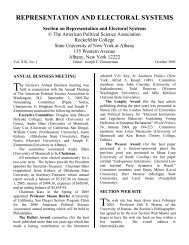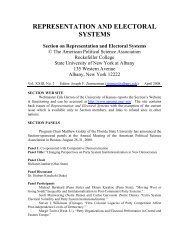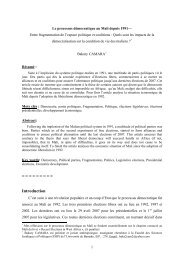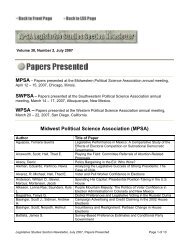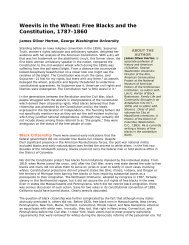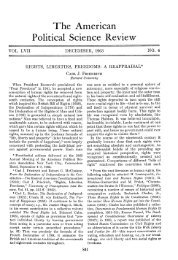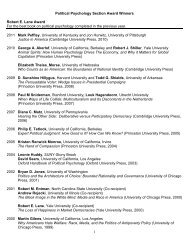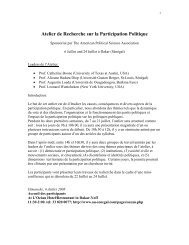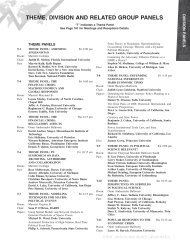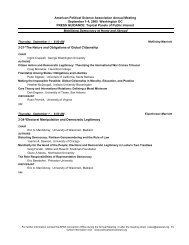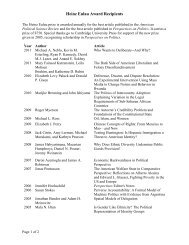The Art of Political Science: Spatial Diagrams as Iconic and Revelatory
The Art of Political Science: Spatial Diagrams as Iconic and Revelatory
The Art of Political Science: Spatial Diagrams as Iconic and Revelatory
Create successful ePaper yourself
Turn your PDF publications into a flip-book with our unique Google optimized e-Paper software.
APSA Presidential Address |<br />
<strong>The</strong> <strong>Art</strong> <strong>of</strong> <strong>Political</strong> <strong>Science</strong><br />
Figure 8<br />
<strong>Spatial</strong> representation <strong>of</strong> dimensions <strong>of</strong><br />
conflict in the Sixteenth General Assembly <strong>of</strong><br />
the United Nations in 1961–1962: Hayward<br />
Alker (1964)<br />
Figure 11<br />
Realignment from a new line <strong>of</strong> cleavage<br />
cutting across an old one: James Sundquist<br />
(1973)<br />
Figure 9<br />
<strong>Spatial</strong> representation <strong>of</strong> perceptual distortions<br />
in two-dimensional party space <strong>as</strong> a function<br />
<strong>of</strong> the relative centrality <strong>of</strong> the dimensions<br />
for the perceiver: Philip Converse (1966)<br />
Figure 12<br />
Cleavages in American politics in the early<br />
1970s: Walter Dean Burnham (1975)<br />
Figure 10<br />
<strong>Spatial</strong> model <strong>of</strong> the electoral process: Otto<br />
Davis, Melvin Hinich, <strong>and</strong> Peter Ordeshook (1970)<br />
Figure 13<br />
<strong>Spatial</strong> representation <strong>of</strong> issue consistency:<br />
Norman Nie, Sidney Verba, <strong>and</strong> John<br />
Petrocik (1976)<br />
314 Perspectives on Politics


